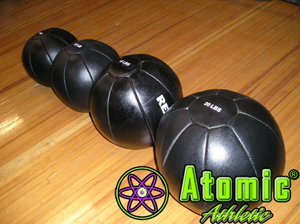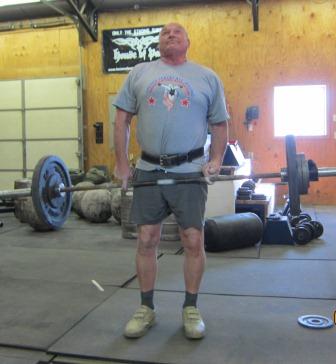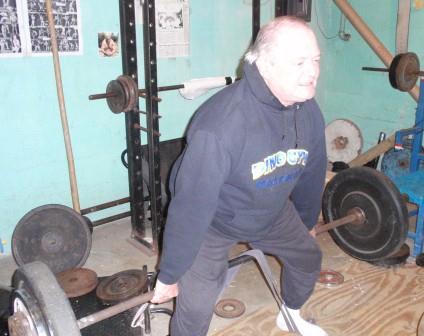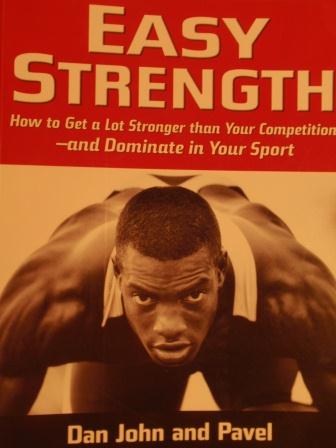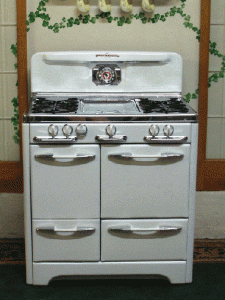Training for the Older Lifter
By Thom Van Vleck
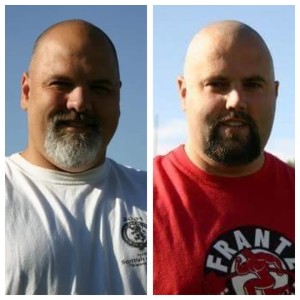
Thom Van Vleck and his brother Tedd who is over 11 years younger. Over the years we have talked a lot about training but our age difference has meant we follow different programs. Age makes a difference in how you train!
Shot Put Gold medalist Adam Nelson told me, “Most training programs are designed for a younger athlete and older athletes need to train differently”.
I would say training programs need to be adjusted over the life span. When I turned 40 I told my Uncle it seemed like when I was a teen I could work out hard every day. Then at 30 I needed a day to recuperate from soreness. Then at 40 it seemed to take a week to get past a heavy duty squat workout soreness. My Uncle, who was pushing 60 and still training very hard said, Thom, I’ve been sore for the last 15 years!”. I laughed but he was serious! He said, “If I waited until I felt 100% I’d never workout again”.
So the body doesn’t recuperate as well.
Then there is injury which is different than recuperation. I remember being young and pulling a muscle or straining a tendon and it recovering very quickly. Now things stay hurt longer and some things just continue to hurt even after they have healed. I tore my hamstring many years ago and I will still “feel it” from time to time.
So injuries add up and then don’t heal a quickly (or ever!). The reality is injury is what ends most lifters competitive careers. Not age.
Finally, there’s the responsibility that comes with age. I remember spending a lot of time as a teen lifting, reading about lifting, thinking about lifting, watching other lifters lifting….you get the idea. I just don’t have that kind of time anymore.
So you don’t have the time as an older lifter.
So the older lifter has to think differently. They have to be smarter with the lifts they train, manage their time, and stay injury free. If they get injured they need to address the injury and be less likely to “train through the injury”.
So for me it’s the “Three Keys” for the older lifter.
1. Facilitating Recuperation
2. Avoiding Injury
3. Managing time
So how do you facilitate recuperation, avoid injury, and manage time to achieve the goal of being strong?
Let’s think about adaptation. Lifting is really adapting to heavier loads. Younger lifters can adapt faster than older lifters. Thus it is often beneficial to change up lifts for a younger lifter. Simply put, they adapt faster. So that means the older the lifter, the slower they adapt.
The thought is as a younger lifter you need to change up lifts and avoid getting “stale” which is the body resisting adaptation. So the older lifter needs to work the same lift for a longer period of time. By doing the same lifts longer they would avoid injury. Sure there’s a trade off but an older lifter will lose more time injured than the younger lifter so he need to avoid injury more than just gain strength.
Another thing the older lifter can do is find a happy medium for the poundage being lifted in training. It is ingrained in every strength athlete to lift more and more weight. They don’t refer to weightlifting as progressive resistance for nothing. But for the older lifter there needs to be a limit. I believe that should be around 75% of one’s max and keep the reps explosive and low at 3 sets of 3. This will allow you to walk that line between getting stronger (or just keeping strength) and injury. You will also stay in a good groove avoiding squeezing out reps that lead to poor form and injury.
The next concept sounds counter to what I’ve just said but think about it first. The older lifter needs to lift 3 to 5 days a week. Essentially, more often than a younger lifter. But it’s the way the lifter trains (doing 75% instead of higher percentages, the same lifts more often, and walking away rather than crawling away) that makes this lifting scheme work. To be clear, I’m talking about doing the SAME lifts every workout, not a split routine. So you end up lifting less volume but doing it more often. This scheme also helps you manage time by keeping you in the training hall more often but for less time. I also believe by training lifts more often you need less time to stretch, warm up, and all that. Because you are essentially staying in a lifting groove. Your body is ready every day to train.
I think a final benefit of following this program is I am enjoying my training more than I have in years. I don’t crawl out of the gym and don’t avoid stairs for three days. The hard part is that I often hit a very good set and in the past that’s when it was “go time” to load up the bar and do something REALLY heavy. Now I simply walk away or move to the next lift. But that means I’m ready to go again in the next day or two.
So here’s some basic points:
- Lift for 3 days a week 45 minutes max duration
- 3 sets of 3 reps on average with a 6 rep max
- 5-10 minutes foam rolling and dynamic stretching
- Same workout everyday as the philosophy is master’s throwers don’t adapt as quickly
- 75% of max and if a consistent tempo can’t be maintained then drop the weight. Lose the ego!
The type of lifts that give you the biggest bang for your buck (lift smarter, remember!)
- Hip Hinge Pattern Movements (i.e. Power Snatches, Cleans, Deadlifts).
- Unilateral/Bilateral Squat Movement (i.e. Squats, lunges) followed by Post Activation Potentiation (PAP) such as broad jumps, vertical jumps, sprints.
- Pushes (i.e. explosive type pressing movements) followed by shoulder prehab work.
- Core work (2 or 3 weighted core exercised for 6-10 reps which may include decline crunches, standing bar twists, handing leg raises).
- Competition lifts: Work them in but focus on the technique and stay at 75% until competition day. Going heavy too much in training just means more injury.
